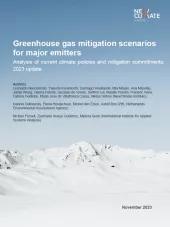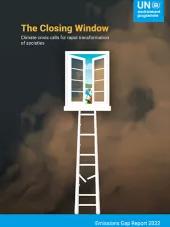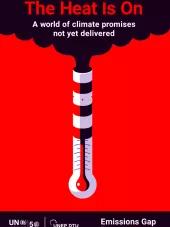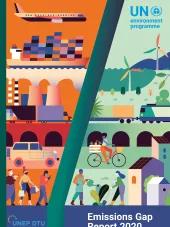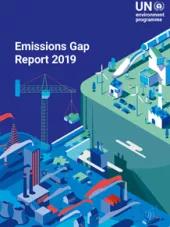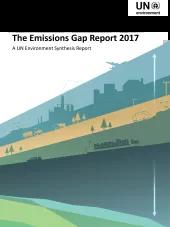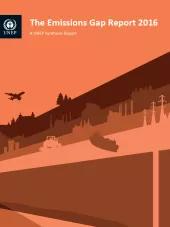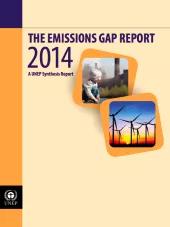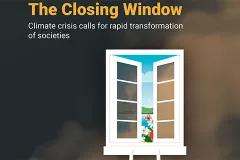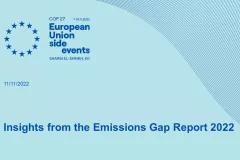This is the 2023 edition of the United Nations Environment Programme (UNEP) Emissions Gap Report series, which tracks our progress in limiting global warming well below 2°C and pursuing 1.5°C in line with the Paris Agreement. Since 2010, it has provided an annual science-based assessment of the gap between estimated future global greenhouse gas (GHG) emissions if countries implement their climate mitigation pledges, and where they should be to avoid the worst impacts of climate change. NewClimate Institute has been contributing to the reports each year since 2014.
For this year's report, NewClimate Institute staff led and contributed to Chapter 3 on G20 country analysis (Takeshi Kuramochi, Niklas Höhne, Frederic Hans, Swithin Lui, Leonardo Nascimento, Silke Mooldijk, Mia Moisio).
Press release (abridged version focusing on chapter with NewClimate contribution):
Nations must go further than current Paris pledges or face global warming of 2.5-2.9°C
- Predicted 2030 emissions must fall by 28-42 per cent for pathway to 2°C and 1.5°C
- Relentless mitigation and low-carbon transformations essential to narrow emissions gap
- COP28 and Global Stocktake chance to build greater ambition for next round of climate pledges
Nairobi, 20 November 2023 – As global temperatures and greenhouse gas emissions break records, the latest Emissions Gap Report from the UN Environment Programme (UNEP) finds that current pledges under the Paris Agreement put the world on track for a 2.5-2.9°C temperature rise above pre-industrial levels this century, pointing to the urgent need for increased climate action.
Released ahead of the 2023 climate summit in Dubai, United Arab Emirates, the Emissions Gap Report 2023: Broken Record – Temperatures hit new highs, yet world fails to cut emissions (again), finds that global low-carbon transformations are needed to deliver cuts to predicted 2030 greenhouse gas emissions of 28 per cent for a 2°C pathway and 42 per cent for a 1.5°C pathway.
Maintaining the possibility of achieving the Paris Agreement temperature goals hinges on significantly strengthening mitigation this decade to narrow the emissions gap. This will facilitate more ambitious targets for 2035 in the next round of Nationally Determined Contributions (NDCs) and increase the chances of meeting net-zero pledges, which now cover around 80 per cent of global emissions.
“There is no person or economy left on the planet untouched by climate change, so we need to stop setting unwanted records on greenhouse gas emissions, global temperature highs and extreme weather,” said Inger Andersen, Executive Director of UNEP. “We must instead lift the needle out of the same old groove of insufficient ambition and not enough action, and start setting other records: on cutting emissions, on green and just transitions and on climate finance.”
Broken records
Until the beginning of October this year, 86 days were recorded with temperatures over 1.5°C above pre-industrial levels. September was the hottest recorded month ever, with global average temperatures 1.8°C above pre-industrial levels.
The report finds that global greenhouse gas (GHG) emissions increased by 1.2 per cent from 2021 to 2022 to reach a new record of 57.4 Gigatonnes of Carbon Dioxide Equivalent (GtCO2e). GHG emissions across the G20 increased by 1.2 per cent in 2022. Emissions trends reflect global patterns of inequality. Because of these worrying trends and insufficient mitigation efforts, the world is on track for a temperature rise far beyond the agreed climate goals during this century.
If mitigation efforts implied by current policies are continued at today’s levels, global warming will only be limited to 3°C above pre-industrial levels in this century. Fully implementing efforts implied by unconditional Nationally Determined Contributions (NDCs) would put the world on track for limiting temperature rise to 2.9°C. Conditional NDCs fully implemented would lead to temperatures not exceeding 2.5°C above pre-industrial levels. All of these are with a 66 per cent chance.
These temperature projections are slightly higher than in the 2022 Emissions Gap Report, as the 2023 report includes a larger number of models in the estimation of global warming. Current unconditional NDCs imply that additional emissions cuts of 14 GtCO2e are needed in 2030 over predicted levels for 2°C. Cuts of 22 GtCO2e are needed for 1.5°C. The implementation of conditional NDCs reduces both these estimates by 3 GtCO2e.
In percentage terms, the world needs to cut 2030 emissions by 28 per cent to get on track to achieve the 2°C goal of the Paris Agreement, with a 66 per cent chance, and 42 per cent for the 1.5°C goal.
If all conditional NDCs and long-term net-zero pledges were met, limiting the temperature rise to 2°C would be possible. However, net-zero pledges are not currently considered credible: none of the G20 countries are reducing emissions at a pace consistent with their net-zero targets. Even in the most optimistic scenario, the likelihood of limiting warming to 1.5°C is only 14 per cent.
Some progress, but not enough
Policy progress since the Paris Agreement was signed in 2015 has reduced the implementation gap, defined as the difference between projected emissions under current policies and full NDC implementation. GHG emissions in 2030 based on policies in place were projected to increase by 16 per cent at the time of the adoption of the Paris Agreement. Today, the projected increase is 3 per cent.
As of 25 September, nine countries had submitted new or updated NDCs since COP27 in 2022, bringing the total number of updated NDCs to 149. If all new and updated unconditional NDCs are fully implemented, they would likely reduce GHG emissions by about 5.0 GtCO2e, about 9 per cent of 2022 emissions, annually by 2030, compared with the initial NDCs. However, unless emission levels in 2030 are brought down further, it will become impossible to establish least-cost pathways that limit global warming to 1.5°C with no or low overshoot during this century. Significantly ramping up implementation in this decade is the only way to avoid significant overshoot of 1.5°C.
COP28 and the Global Stocktake
The first Global Stocktake (GST), concluding at COP28, will inform the next round of NDCs that countries should submit in 2025, with targets for 2035. Global ambition in the next round of NDCs must bring GHG emissions in 2035 to levels consistent with 2°C and 1.5°C pathways, while compensating for excess emissions until levels consistent with these pathways are achieved.
The preparation of the next round of NDCs offers the opportunity for low- and middle-income countries to develop national roadmaps with ambitious development and climate policies, and targets for which finance and technology needs are clearly specified. COP28 should ensure that international support is provided for the development of such roadmaps.




